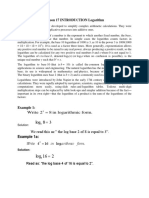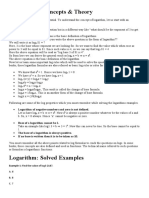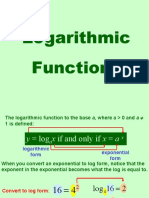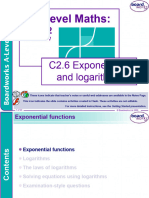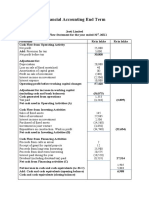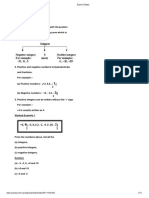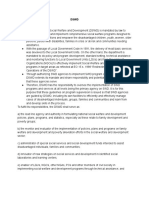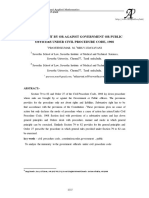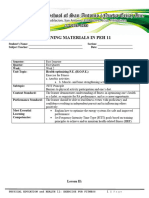0% found this document useful (0 votes)
101 views96 pagesBasics of Logarithms
Logarithms are only defined for positive real numbers. This is because the definition of the logarithm relies on the exponential function, which is only defined for positive real bases and arguments.
Specifically, a logarithm logb(x) is defined as the power to which the base b must be raised to equal the argument x. But a negative number like -8 cannot be written as bp for any real p, since any real power of a positive base will also be positive.
So log2(-8) is undefined because there is no real number p such that 2p = -8. The argument -8 is not in the domain of the logarithm function with base 2. Logarithms require positive arguments in order
Uploaded by
Johnny ProCopyright
© © All Rights Reserved
We take content rights seriously. If you suspect this is your content, claim it here.
Available Formats
Download as PDF, TXT or read online on Scribd
0% found this document useful (0 votes)
101 views96 pagesBasics of Logarithms
Logarithms are only defined for positive real numbers. This is because the definition of the logarithm relies on the exponential function, which is only defined for positive real bases and arguments.
Specifically, a logarithm logb(x) is defined as the power to which the base b must be raised to equal the argument x. But a negative number like -8 cannot be written as bp for any real p, since any real power of a positive base will also be positive.
So log2(-8) is undefined because there is no real number p such that 2p = -8. The argument -8 is not in the domain of the logarithm function with base 2. Logarithms require positive arguments in order
Uploaded by
Johnny ProCopyright
© © All Rights Reserved
We take content rights seriously. If you suspect this is your content, claim it here.
Available Formats
Download as PDF, TXT or read online on Scribd
/ 96














